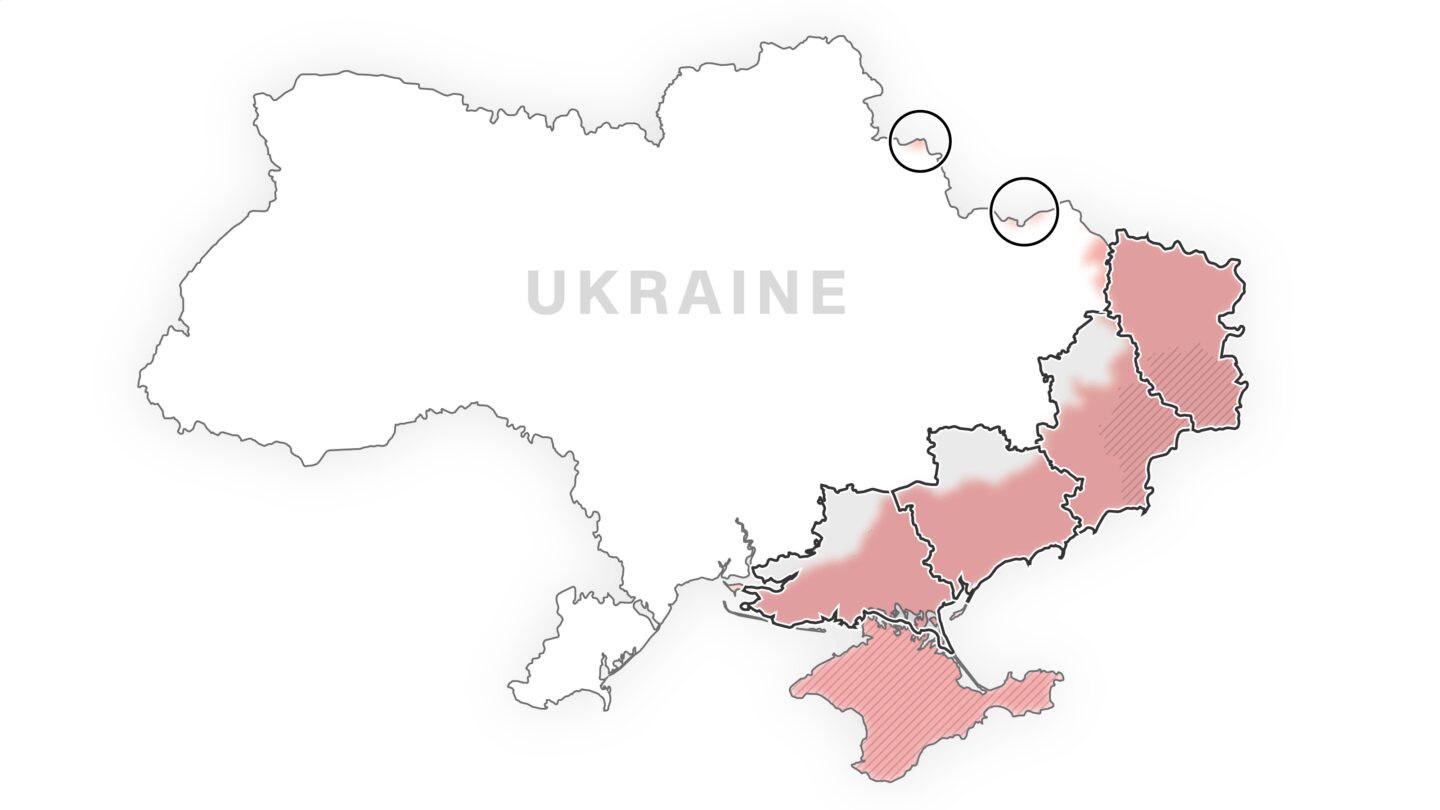Maps show the key regions in Ukraine that Putin wants

US President Donald Trump and Russia’s Vladimir Putin are meeting Friday for a summit in Alaska aimed - on the US side at least - at bringing an end to the grinding war that has followed Russia’s full-scale invasion of 2022. Any peace deal around Ukraine would need to involve agreement on territory
By Nick Paton Walsh, Rachel Wilson, Lou Robinson, CNN
Kyiv (CNN) — US President Donald Trump and Russia’s Vladimir Putin are meeting Friday for a summit in Alaska aimed – on the US side at least – at bringing an end to the grinding war that has followed Russia’s full-scale invasion of 2022. Any peace deal around Ukraine would need to involve agreement on territory, with Russia currently occupying almost a fifth of Ukraine’s land.
Last Friday, Trump suggested a ceasefire deal could involve “some swapping of territories,” but it is not yet clear what areas he was referring to, and Ukraine has categorically rejected ceding parts of its land. Russia, too, has rejected the idea.
On Wednesday, French President Emmanuel Macron said that Trump was “very clear” on a call with European leaders that Washington wants to obtain a ceasefire and that Ukraine’s territorial issues cannot be negotiated without its president, Volodymyr Zelensky.
Here’s what maps tell us about what’s at stake.
Where are we talking about?
One proposal, elements of which have emerged over the past week, reportedly presented to US Special Envoy Steve Witkoff in Moscow, would have Ukraine give up the remainder of the eastern Donetsk region and Luhansk, together known as the Donbas, in exchange for a ceasefire.
But this week, the situation in Donetsk has rapidly deteriorated, with Russian forces making important advances to the north east of Dobropilia, altering control of the area Witkoff has been discussing with the Kremlin. Kyiv has downplayed the advances as infiltration by small groups of Russian forces, but sent reinforcements. Other Ukrainian sources in the area paint a more dire picture, in which months of persistent Russian pressure has culminated in a weak spot to exploit.
What could a ‘swap’ look like?
It would be politically toxic for Ukraine’s Zelensky to order tens of thousands of civilians and troops to voluntarily leave Donetsk region. Many could refuse. The practical elements of it would be impossible – evacuating tens of thousands of civilians in days or weeks, to fit the timetable of a peace deal hatched during a Russian summer offensive where Moscow’s forces are gaining ground.
There are few obvious options for Moscow to concede back. They hold slivers of border land to the north – near Sumy and Kharkiv – both of which are called “buffer zones” by the Kremlin head, and are the result of less-than-successful incursions designed to drain Ukraine’s manpower. But they are tiny and, as Ukrainian officials point out, also part of Ukraine, not Russia. So they are not an obvious or equal “swap.”
What about the other occupied areas?
Some of the confusion around Witkoff’s Kremlin meeting was whether Putin had stepped back from his maximalist war goals, and had conceded a potential ceasefire purely in exchange for Donetsk. Putin has always wanted way more, and indeed Russia’s constitution has perpetuated the false narrative that Ukraine is historically Russia, by adding all four partially occupied regions of Ukraine to its territory.
Moscow holds most of Donetsk and nearly all of Luhansk. But it only controls about two-thirds of Kherson and Zaporizhzhia respectively, the former liberated in part from Russian forces in late 2022.
Would Putin agree to leave the Ukrainian-held parts of Kherson and Zaporizhzhia under Kyiv’s control? That remains unclear. But Ukraine ceding this territory would be another non-starter, requiring vast tracts of land to be handed over to Moscow and indeed the entire bustling city of Zaporizhzhia to evacuate or become Russian. Zelensky has also warned that territory conceded to Russia would simply be used as a springboard for further invasions, as happened with Crimea, illegally annexed by Moscow in 2014, and used as a launchpad for the full-scale war in 2022.
So what about freezing the front lines now?
The statements of Ukraine’s European allies have suggested the current line of contact be the starting point for negotiations. That is not quite a concession, but an important change in tone. For years, Europe and Kyiv – along with the Biden administration – have declared they will never recognise or accept Russian control over occupied parts of Ukraine. But since the return of Trump to the White House, they have softened their position, quietly entertaining the idea that the front lines might be frozen.
In truth, that would be a good outcome for Kyiv now. While Russian advances near Dobropilia in the past days are inconclusive, across the front lines as a whole they are turning months of incremental progress into more strategic gains. Putin is clearly playing for time, both over the past months of slow-rolled diplomacy in Istanbul, and in Alaska, where the White House has reframed a summit aimed at an immediate peace deal to avoid hard-hitting sanctions into a softer “listening exercise.”
For Kyiv, the best outcome would be Trump asserting, as he has hinted he could, that “in the first two minutes” of the meeting it’s clear there is no deal to be had, and then imposing the secondary sanctions against Moscow’s big energy customers – India and China – that he promised to implement last Friday.
But Trump and Putin’s relationship is founded on an opaque connection that seems to often override the United States’ longer-term security interest, and so the outcome of their meeting in Alaska is likely to be less in Ukraine’s favor, and certainly a high-stakes dice roll.
The-CNN-Wire
™ & © 2025 Cable News Network, Inc., a Warner Bros. Discovery Company. All rights reserved.
CNN’s Nick Paton Walsh reported from Kyiv, with graphics from Rachel Wilson and Lou Robinson in London.



